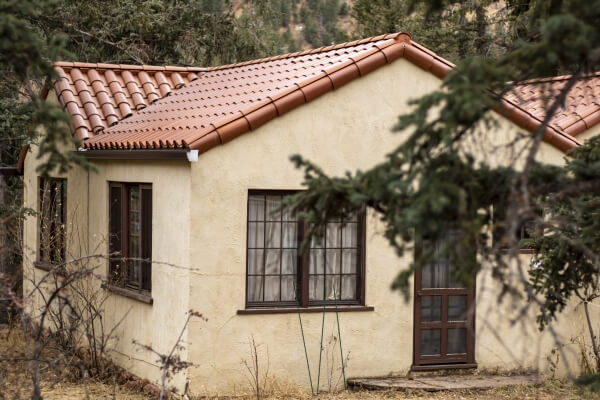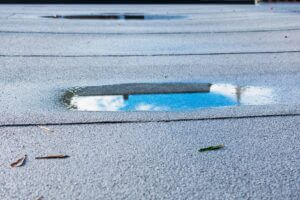All About Clay and Concrete Tile Roofing
If you are in the market for a new roof, you will want to consider your roofing material options carefully. In Colorado Springs, it’s important to choose a roofing material that is durable enough to withstand hail and other elements. In this part of our series, we will explore the pros and cons of natural clay and concrete tile roofing.
What is Clay or Concrete Tile Roofing?
Natural clay roofing tiles are made of molded clay baked at high temperatures. The hardness of the tiles depends on the temperatures at which they are baked. Boral clay tile roofing comes in the following profiles: high and low barrel tile, slate, and wood shake. The most common clay tile roofing color is terra cotta, but you can also find them in shades of brown and other colors. Concrete tiles are made of a mixture of sand, water, oxides, and the pigments that give them their color. Similar to clay tiles, concrete tiles are pressed into molds and placed into a kiln to dry. Additional sealants may be used to curb water absorption. Boral concrete tile roofs can mimic the look of wood shake, high and low barrel tile, and natural slate roofing. Tiles made of concrete come in shades of brown, grey, and even green. Both clay and concrete roof tiles are durable and heavy. Homeowners who are interested in a tile roof should have an engineer analyze the roof structure to find out if it can hold the weight of these products if they are not already on the roof.
How Does the Cost of Clay and Concrete Tile Roofing Compare to Other Materials?
Clay and concrete tile roofs are costly upfront. Clay roofs generally cost more than concrete roofs. This roof type boosts a home’s curb appeal and offers excellent benefits like longevity, energy efficiency, and easy maintenance. Just like stone coated steel and F-Wave REVIA roofs, tile roofs long outlast asphalt shingle roofs, so the investment can pay off over time.
How Long Will a Clay or Concrete Tile Roof Last?
Many homeowners choose clay or concrete tile roofs due to their superior longevity. These roofs can last up to 100 years. Clay tiles are especially long-lasting because their natural pigments do not fade over time. The coloring agents used in concrete tiles, however, can fade eventually. Both clay and concrete tiles are prone to some water absorption, which can cause cracking in freezing/thawing weather conditions. If you choose a tile roof, be prepared to occasionally repair a broken tile as a part of your regular roof maintenance. Tile roofs are available in UL2218 Class 3 and Class 4 impact resistance ratings which also extends their lifespan. Depending on the tile you choose, your roof can withstand the impact of 1.75” – 2” hailstones without cracking. As an additional benefit, tile roofs are Class A fire resistant.
If you are replacing your roof, consider tile roofing as a possible long-term investment. Tile roofs can greatly boost your home’s value and curb appeal for many years beyond the life of other products.




